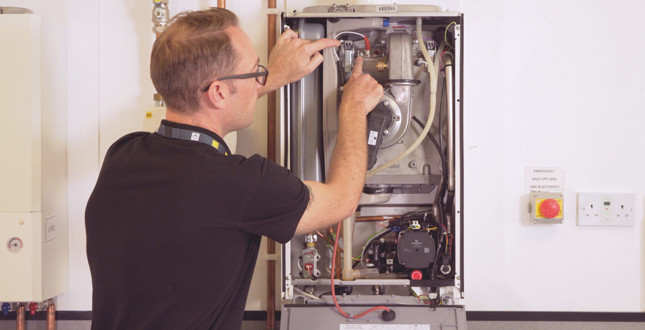

In light of Gas Safety Week (17-24 September), Jonathan Kidner, Product Engineer at Alpha Heating Innovation, provides a refresher on what a good gas service should entail
It is recommended that a boiler is serviced at least once a year and while there is no set standard for what a boiler service should cover, there are several key points that installers should cover to ensure a high-quality service for customers.
Firstly, although there might be a temptation to get the job finished quickly, it is important not to rush. You are much less likely to miss something if time and care is taken to thoroughly check both the boiler and the system. This helps reassure the customer that they are receiving the service they have paid for and that their boiler is in full working order.
The initial step should be to ask the customer about any problems they have been experiencing with the boiler or heating system. This will not only make you aware of any pre-existing faults but may also provide an indication of other issues. For example, if the homeowner reports that the central heating system is slow to warm up, or that the radiators have cold spots, it could be a sign of sludge and contamination in the system.
Once the boiler has been run briefly to check that it is in working order, it should be switched off and the outer case removed. Perform a visual inspection of the unit, both internally and externally to look for signs of problems with the system such as corrosion or water leaks. Following the manufacturer’s guidelines engineers should access, check and clean the boiler’s main components such as the primary heat exchanger, burner, fan, and flame ports to remove any deposits or blockages. Once the components have been refitted, the boiler should be run, and a combustion check carried out, as per the manufacturer’s instructions to ensure the appliance is operating safely.
Next, the condition of the flue should be assessed. Where the location of a boiler means that the flue has to be installed in a void, such as in ceilings or behind false walls, steps should have been taken during the installation to ensure the condition of the full length of the flue can be checked. The recommended course of action is to install inspection hatches at appropriate points along the route of the flue to allow visual examination. However, where inspection hatches are impractical the alternative is to install a CO2 monitoring system interlocked with the boiler.
Under the Gas Safety (Installation and Use) Regulations, if a flue cannot be inspected and no monitoring system is in place, engineers should issue an 'At Risk' notice, even if there are no other indications that the boiler is unsafe. With the permission of the responsible person, usually the homeowner, the appliance should be switched off. If the homeowner does not give permission they must take responsibility for the safety of the property and its occupants.
Finally, it is recommended that engineers perform a basic check of the rest of the heating system including the radiators, controls, the hot water cylinder and carbon monoxide detector. This should also include a check of the inhibitor levels in the system to ensure it is protected from corrosion and scale forming. Maintaining the levels of chemical water treatment will not only improve the energy efficiency and extend the life of the system, but is also commonly a condition of warranty from boiler manufacturers. If an inline system filter is fitted, this should be cleaned and any captured debris removed. If a filter has not been installed, it is best practice to recommend that one is added as it will help protect the boiler by removing both metallic and non-metallic particles.
Furthermore, by now installers will be well aware of the requirement of the new Boiler Plus regulations for an additional energy saving device to be fitted alongside every new combi boiler. The four ways this stipulation can be met are with a weather compensation device or load compensation device, a smart control or a flue gas heat recovery device. Although these regulations do not apply to existing systems, heating engineers should consider recommending these devices to customers during service visits. It is an ideal opportunity to provide an extra service to an existing customer and will help households reduce their energy bills. For example, a weather or load compensation device is generally quite inexpensive and will save approximately £30-40 a year on their household energy bills. While a flue gas heat recovery system is more expensive to install, it can deliver energy savings of as much as £100 a year.
The lack of a clearly defined standard for servicing means that often customers do not know what they should expect, however it does provide engineers with an opportunity to create a competitive advantage by providing a superior service.
If you'd like to keep up-to-date with the latest developments in the heating and plumbing industry, why not subscribe to our weekly newsletters? Just click the button below and you can ensure all the latest industry news and new product information lands in your inbox every week.